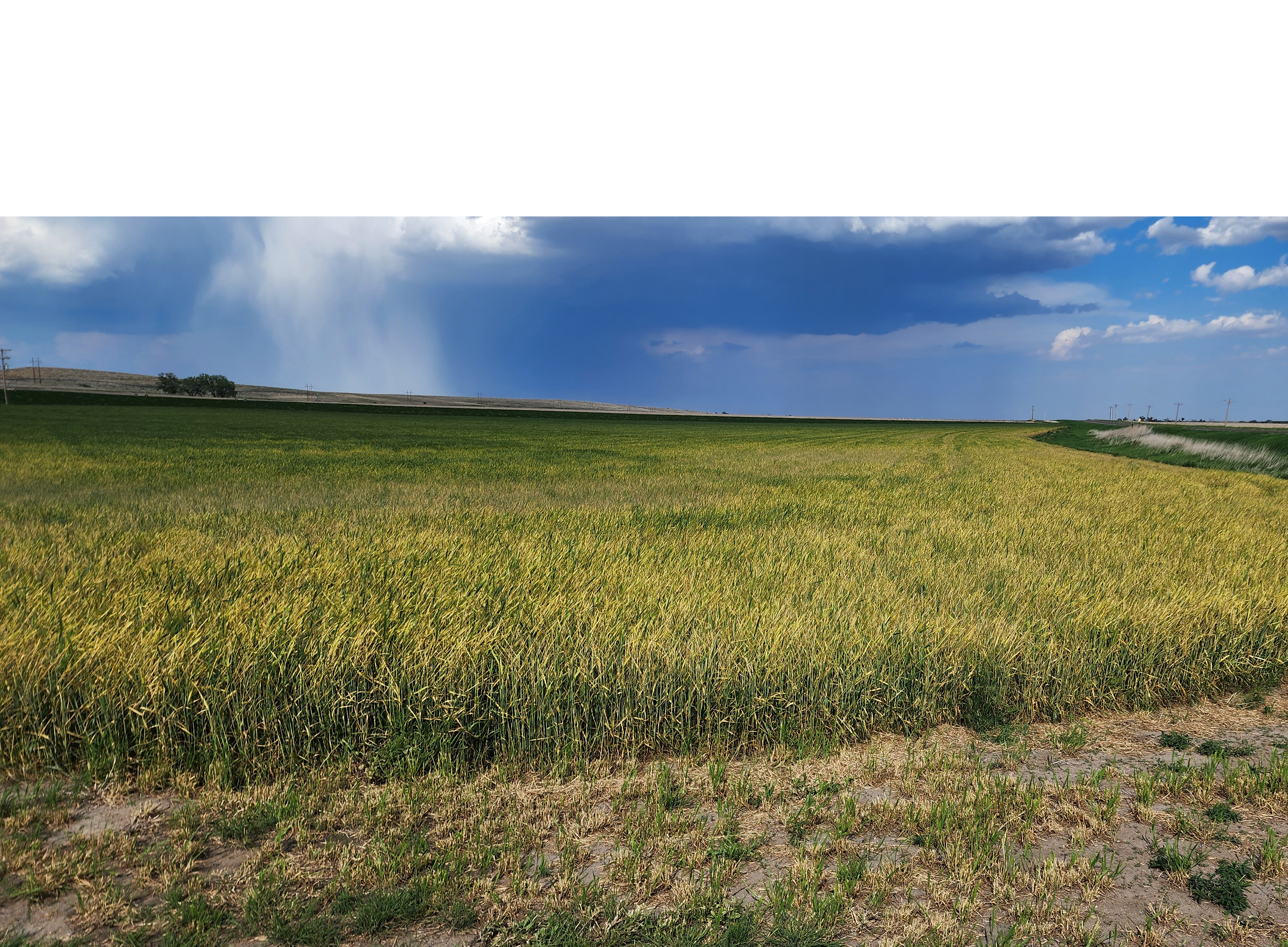Content developed by John Watkins, Emeritus Professor of Plant Pathology, and updated by Stephen Wegulo, Extension Plant Pathologist
Pathogen
The wheat streak mosaic virus (WSMV) is a member of the Potyviridae family of viruses. It occurs in most leaf cells as flexuous rods. The wheat curl mite, Aceria tosichella, vectors the virus in the field. It is also easily transmissible through sap by mechanical inoculation. The wheat curl mite vector feeds on young lush growth of wheat and certain grasses. Mites develop from eggs to adults within 8 to 10 days, and their numbers can increase markedly during relatively short periods when the environment is favorable.
Disease Symptoms
Leaves of infected plants show a yellowed mosaic pattern of parallel discontinuous streaks. As symptoms, progress the leaves become mottled yellow. Plants infected before early tillering are stunted, discolored and rosetted. The extent of stunting and rosetting in a field gives some indication as to the severity of the disease and ultimate yield loss. The streaked mosaic pattern on leaves and the rosette appearance of plants are good field diagnostic symptoms. Mite-infested leaves tend to have their edges rolled inward toward the mid-rib. On a young plant the tip of a new leaf often is trapped in the rolled leaf immediately below it so that the developing leaf is curled black on itself, forming a loop. In most years, there is a gradation of intensity of symptoms across a field with the most yellowing on the side of the field adjacent to wheat stubble, corn, or areas with high populations of grassy weeds that are sources of the mites.
Favorable Environmental Conditions
The key to outbreaks of wheat streak mosaic on winter wheat is the presence of over summering hosts on which virus-carrying mites build up to large numbers. The most important host is volunteer wheat that emerges before harvest, often because of hailstorms. The mites move from the hailed wheat as it matures to the young volunteer wheat in early July. Reproduction of mites and replication of the virus are favored by temperatures of 75°F to 80°F. Rain during summer promotes growth of volunteer plants. In the fall mites move from the volunteer plants to the newly emerged fall-planted winter wheat seedlings, the wingless curl mite depends on wind for its dispersal.
Management
Cultural Practices
Wheat streak mosaic is controlled by cultural practices that minimize sources of mites and virus when winter wheat crops emerge in the fall. The key components of managing this disease are effective post harvest weed control and planting date. Control volunteer wheat and grassy weeds that emerge before harvest with tillage or herbicides at least two weeks before fall planting. In hailed areas, a community effort must be made to control volunteer wheat. Do not plant winter wheat too early for your growing area. Avoid planting winter wheat next to late maturing green corn fields since corn can be a carrier for both the mite and virus.
Links
For additional information, see the UNL Extension Circular, Managing Wheat Streak Mosaic (EC1871).








